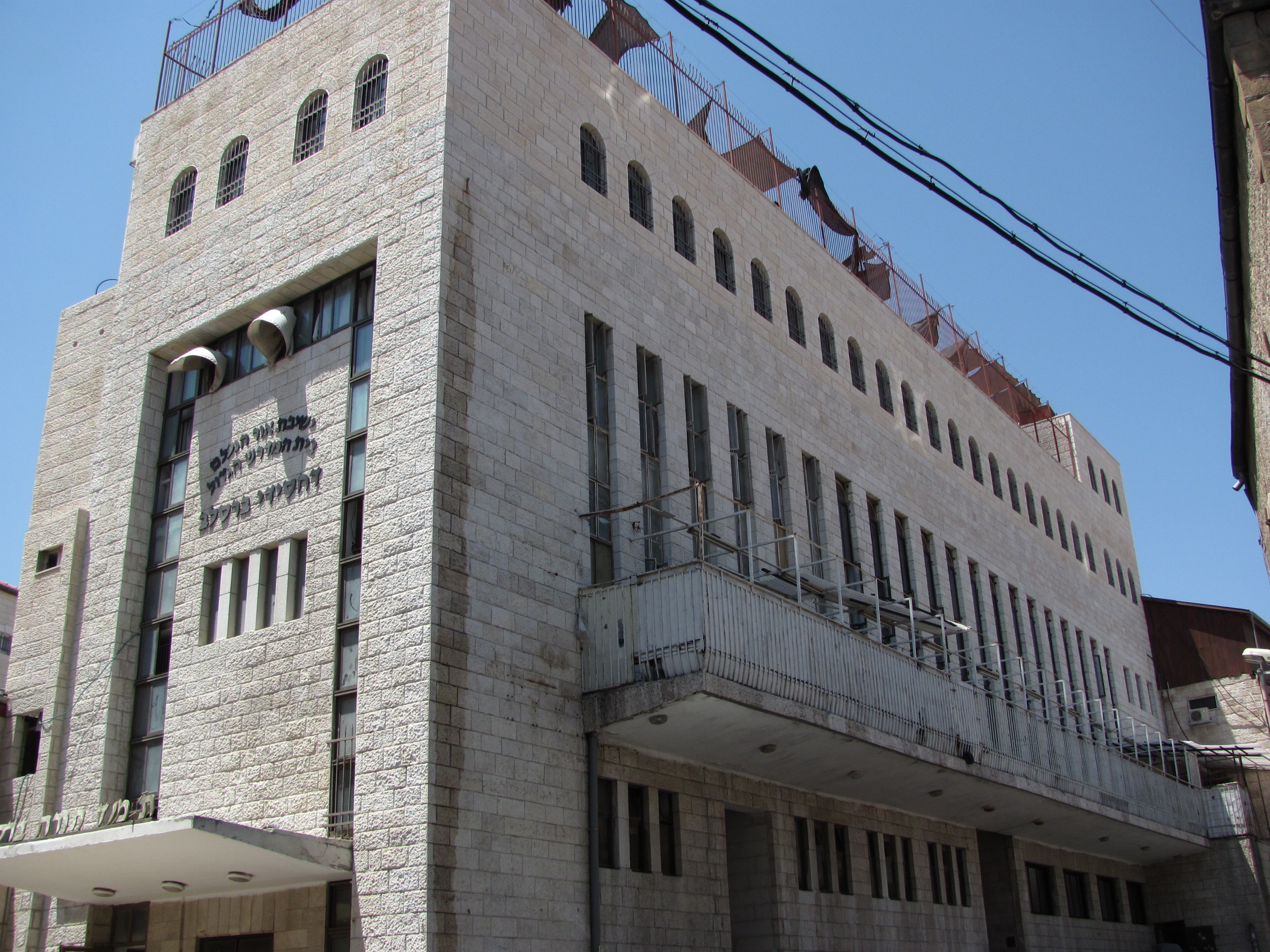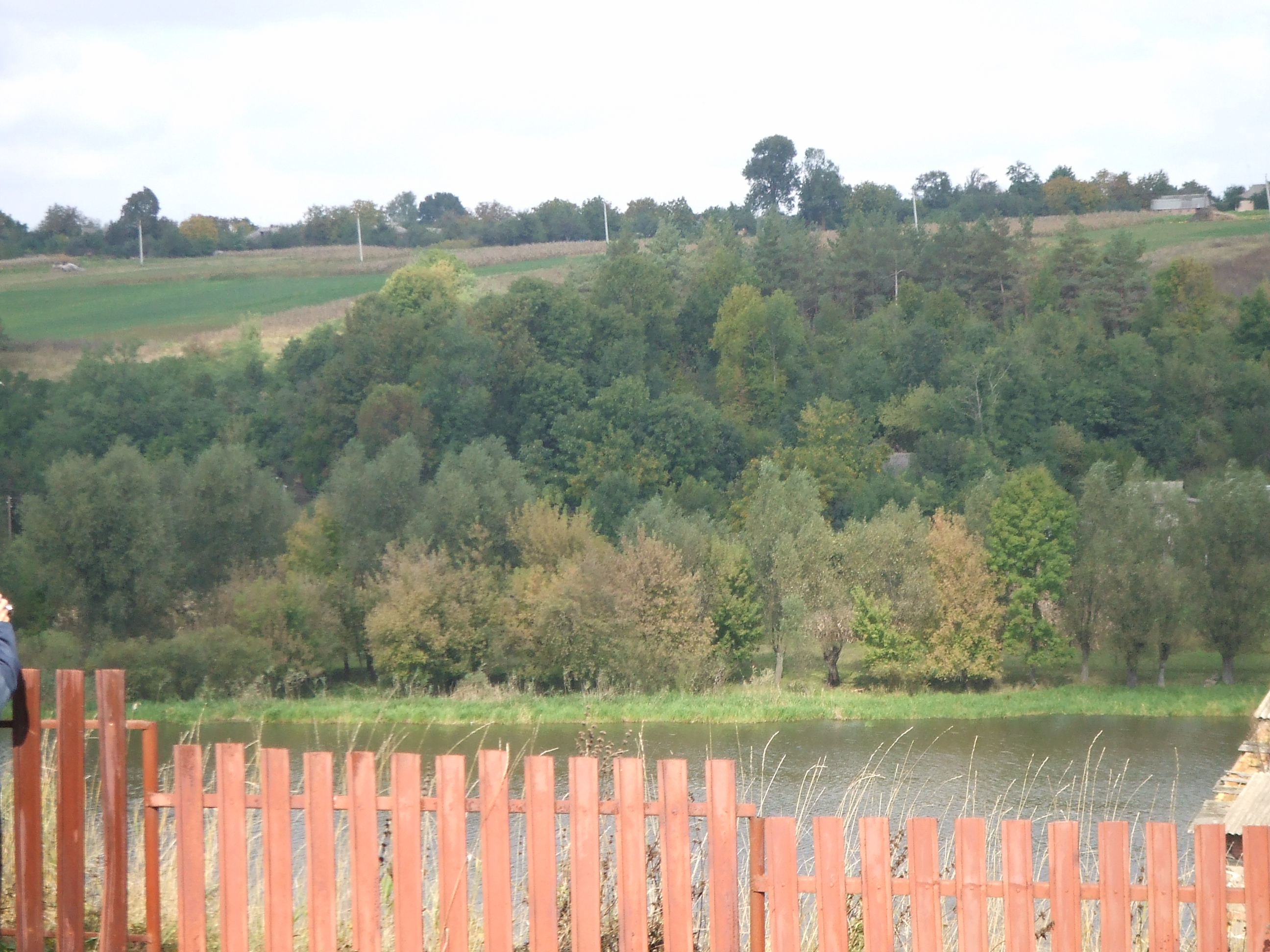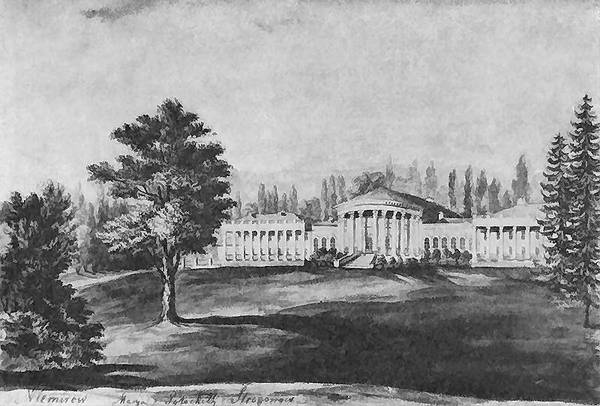|
Breslov
Breslov (also Bratslav and Breslev) is a branch of Hasidic Judaism founded by Nachman of Breslov (1772–1810), a great-grandson of the Baal Shem Tov, founder of Hasidism. Its adherents strive to develop an intense, joyous relationship with God and receive guidance toward this goal from the teachings of Nachman. The movement has had no central, living leader for the past 200 years, as Nachman did not designate a successor. As such, Breslov adherents are sometimes referred to as the "dead Hasidim" () since they have never had a formal Rebbe since Nachman's death. However, certain groups and communities under the Breslov banner refer to their leaders as "Rebbe". The movement weathered strong opposition from virtually all other Hasidic movements in Ukraine throughout the 19th century, yet, at the same time, experienced growth in numbers of followers from Ukraine, Belarus, Lithuania, and Poland. By World War I, thousands of Breslov Hasidim lived in the region. After the Bolshevi ... [...More Info...] [...Related Items...] OR: [Wikipedia] [Google] [Baidu] |
Nachman Of Breslov
Nachman of Breslov ( ''Rabbī'' ''Naḥmān mīBreslev''), also known as Rabbi Nachman of Breslev, Rabbi Nachman miBreslev, Reb Nachman of Bratslav, Reb Nachman Breslover ( ''Rebe Nakhmen Breslover''), and Nachman from Uman (April 4, 1772 – October 16, 1810), was the founder of the Breslov Hasidic movement. He was particularly known for his creative parables, drawing on Eastern European folktales to infuse his teaching with deeply kabbalistic yet universally accessible remedies, pieces of advice, and parabolic stories. He emphasized finding and expressing one’s uniqueness while steering away from despair in a world he saw as becoming more and more uniform. Through Martin Buber's translation, his teaching is thought to have influenced some 20th-century writers, including Franz Kafka. Rabbi Nachman, a great-grandson of the Baal Shem Tov, revived the Hasidic movement by combining the Kabbalah with in-depth Torah scholarship. He attracted thousands of followers during his ... [...More Info...] [...Related Items...] OR: [Wikipedia] [Google] [Baidu] |
Uman
Uman (, , ) is a city in Cherkasy Oblast, central Ukraine. It is located to the east of Vinnytsia. Located in the east of the historical region of Podolia, the city rests on the banks of the Umanka River. Uman serves as the administrative center of Uman Raion (district). It hosts the administration of Uman urban hromada, one of the hromadas of Ukraine. Population: Among Ukrainians, Uman is known for its depiction of the Haydamak rebellions in Taras Shevchenko's longest of poems, ''Haidamaky'' ("The Haidamaks", 1843). The city is also a pilgrimage site for Breslov Hasidic Jews and a major center of gardening research containing the dendrological park Sofiyivka and the University of Gardening. Uman (Humań) was a privately owned city of Poland and the Polish–Lithuanian Commonwealth. Name In addition to the , in other languages the name of the city is and (local Yiddish pronunciation 'Imen'). History Polish rule Uman was first mentioned in historical documents in ... [...More Info...] [...Related Items...] OR: [Wikipedia] [Google] [Baidu] |
Hasidic Judaism
Hasidism () or Hasidic Judaism is a religious movement within Judaism that arose in the 18th century as a Spirituality, spiritual revival movement in contemporary Western Ukraine before spreading rapidly throughout Eastern Europe. Today, most of those affiliated with the movement, known as ''hassidim'', reside in Israel and in the United States (mostly Brooklyn and the Hudson Valley). Israel Ben Eliezer, the "Baal Shem Tov", is regarded as its founding father, and his disciples developed and disseminated it. Present-day Hasidism is a sub-group within Haredi Judaism and is noted for its religious conservatism and social seclusion. Its members aim to adhere closely both to Orthodox Judaism, Orthodox Jewish practice – with the movement's own unique emphases – and the prewar lifestyle of Eastern European Jews. Many elements of the latter, including various special styles of dress and the use of the Yiddish language, are nowadays associated almost exclusively with Hasidism. Has ... [...More Info...] [...Related Items...] OR: [Wikipedia] [Google] [Baidu] |
Nemyriv
Nemyriv ( ; ) is a historic city in Vinnytsia Oblast (province) in Ukraine, located in the historical region of Podolia. It was the administrative center of former Nemyriv Raion (district). Population: Nemyriv is one of the oldest cities in Vinnytsia Oblast, Ukraine. It was founded by Prince Nemyr in 1390. It is a minor industrial center. The distiller company that produces Ukrainian Nemiroff (Russian spelling) vodka is located in Nemyriv. The town's tourist attractions include a late 19th-century palace (which belonged to the House of Potocki) and a park complex. History Nemyriv was built on the site of ancient Scythian settlement Myriv, destroyed during the Mongol invasion of Rus'. The settlement was re-established at the end of the 14th century and the first written mention of the city under its modern name in 1506. Nemyriv ultimately derives from the Slavic given name Niemir. It was a private town of Poland, owned by the families of Zbaraski and Potocki. Polish K ... [...More Info...] [...Related Items...] OR: [Wikipedia] [Google] [Baidu] |
Bratslav
Bratslav (, ; ) is a rural settlement in Ukraine, located in Tulchyn Raion of Vinnytsia Oblast, by the Southern Bug river. It is a medieval European city and a regional center of the Eastern Podolia region (see Bracław Voivodeship) founded by government of the Crown of the Kingdom of Poland, which dramatically lost its importance during the 19th–20th centuries. Population: Name In addition to the Ukrainian (''Bratslav''), in other languages the name of the city is and , ''Bratslev''. Today also pronounced Breslev or '' Breslov'' as the name of a Hasidic group, which originated from this town. History The first written mention of Bratslav dates back to 1362. City status was granted Magdeburg Rights in 1564. Bratslav belonged to the Grand Duchy of Lithuania until the Lublin Union of 1569, when it became a voivodeship center in the Crown of the Kingdom of Poland as part of the Polish–Lithuanian Commonwealth. In the early 16th century, the Starosta of Bratslav and ... [...More Info...] [...Related Items...] OR: [Wikipedia] [Google] [Baidu] |
Baal Shem Tov
Israel ben Eliezer (According to a forged document from the "Kherson Geniza", accepted only by Chabad, he was born in October 1698. Some Hasidic traditions place his birth as early as 1690, while Simon Dubnow and other modern scholars argue for a date around 1700. –1760), known as the Baal Shem Tov (; ) or BeShT (), was a Jewish mystic and healer who is regarded as the founder of Hasidic Judaism. A ''baal shem tov'' is a "Master of the Good Name," that is, one able to work miracles using the secret name of God. Other sources explain his sobriquet as arising from a reputation of being a saintly, or superior, Baal Shem "miracle-worker", hence he was given the nickname Baal Shem ''Tov'', the "good Baal Shem". Biographical information about the Baal Shem Tov comes from contemporary documents from the Polish–Lithuanian Commonwealth and the legendary traditions about his life and behavior collected in the ''Praise of the Besht'' (). A central tenet of the teachings associa ... [...More Info...] [...Related Items...] OR: [Wikipedia] [Google] [Baidu] |
Wrocław
Wrocław is a city in southwestern Poland, and the capital of the Lower Silesian Voivodeship. It is the largest city and historical capital of the region of Silesia. It lies on the banks of the Oder River in the Silesian Lowlands of Central Europe, roughly from the Sudetes, Sudeten Mountains to the north. In 2023, the official population of Wrocław was 674,132, making it the third-largest city in Poland. The population of the Wrocław metropolitan area is around 1.25 million. Wrocław is the historical capital of Silesia and Lower Silesia. The history of the city dates back over 1,000 years; at various times, it has been part of the Kingdom of Poland, the Kingdom of Bohemia, the Kingdom of Hungary, the Habsburg monarchy of Austria, the Kingdom of Prussia and German Reich, Germany, until it became again part of Poland in 1945 immediately after World War II. Wrocław is a College town, university city with a student population of over 130,000, making it one of the most yo ... [...More Info...] [...Related Items...] OR: [Wikipedia] [Google] [Baidu] |
Tulchyn
Tulchyn (, ; ; ; ; ; ) is a city in Vinnytsia Oblast (Oblast, province) of western Ukraine, in the historical region of Podolia. It is the Capital city, administrative center of Tulchyn Raion (Raion, district). Its population is 13,896 (2023 estimate). History Tulchyn was first mentioned in written sources in 1607, under the name Nestervar. It was a royal city in the Bracław Voivodeship in the Lesser Poland Province, Crown of the Kingdom of Poland, Lesser Poland Province of the Crown of the Kingdom of Poland. In 1609 King Sigismund III Vasa granted the town to Walenty Aleksander Kalinowski. Until 1728 Tulchyn was part of the estates of the Polish magnates of the Kalinowski family (other distinguished members of Tulchyn family were Adam Kalinowski and Marcin Kalinowski), and then passed into the hands of Stanisław Szczęsny Potocki, Stanisław Potocki bypassing other Kalinowskis' branch, then in 1734 to Franciszek Salezy Potocki and his son Stanisław Szczęsny Potocki, who was t ... [...More Info...] [...Related Items...] OR: [Wikipedia] [Google] [Baidu] |
Operation Barbarossa
Operation Barbarossa was the invasion of the Soviet Union by Nazi Germany and several of its European Axis allies starting on Sunday, 22 June 1941, during World War II. More than 3.8 million Axis troops invaded the western Soviet Union along a front, with the main goal of capturing territory up to a line between Arkhangelsk and Astrakhan, known as the A-A line. The attack became the largest and costliest military offensive in history, with around 10 million combatants taking part in the opening phase and over 8 million casualties by the end of the operation on 5 December 1941. It marked a major escalation of World War II, opened the Eastern Front—the largest and deadliest land war in history—and brought the Soviet Union into the Allied powers. The operation, code-named after the Holy Roman Emperor Frederick Barbarossa ("red beard"), put into action Nazi Germany's ideological goals of eradicating communism and conquering the western Soviet Union to repopulate it w ... [...More Info...] [...Related Items...] OR: [Wikipedia] [Google] [Baidu] |
Jewish Theological Seminary Of Breslau
The Jewish Theological Seminary of Breslau (official name: ) was an institution in Breslau for the training of rabbis, founded under the will of Jonah Frankel (businessman), Jonah Fränckel, and opened in 1854. It was the first modern rabbinical seminary in Central Europe, an academic precursor to today’s Conservative Judaism, Conservative movement, and a center of ''Wissenschaft des Judentums''. The seminary, at what is now an empty building plot (used as a car park) on 14-18 Wlodkowica Street, was closed in 1938 by Nazi Party officials following Kristallnacht. Commercial Councilor ("Kommerzienrath") Jonas Fränckel, a descendant of a rabbinic family, and a very wealthy bachelor, who devoted his entire fortune to philanthropic and educational purposes, left a bequest for the establishment of a training-school for rabbis and Jewish teachers. Fränckel was president of the Breslau congregation, and an enthusiastic supporter of Abraham Geiger, who had no doubt inspired the beques ... [...More Info...] [...Related Items...] OR: [Wikipedia] [Google] [Baidu] |
Mizrahi Jews
Mizrahi Jews (), also known as ''Mizrahim'' () in plural and ''Mizrahi'' () in singular, and alternatively referred to as Oriental Jews or ''Edot HaMizrach'' (, ), are terms used in Israeli discourse to refer to a grouping of Jews, Jewish communities that lived in the Muslim world. ''Mizrahi'' is a political sociological term that was coined with the creation of the Israel, State of Israel. It translates as "Easterner" in Hebrew. The term ''Mizrahi'' is almost exclusively applied to descendants of Jewish communities from North Africa, Central Asia, West Asia, and parts of the North Caucasus. This includes Iraqi Jews, Iranian Jews, Bukharan Jews, Bukharian Jews, Kurdish Jews, Afghan Jews, Mountain Jews, Georgian Jews, and the small community of History of the Jews in Bahrain, Bahraini Jews. The aforementioned groups are believed to derive their ancestry in large part from the Babylonian captivity. Yemenite Jews are also ''Mizrahi'' Jews, though they differ from other ''Mizra ... [...More Info...] [...Related Items...] OR: [Wikipedia] [Google] [Baidu] |









